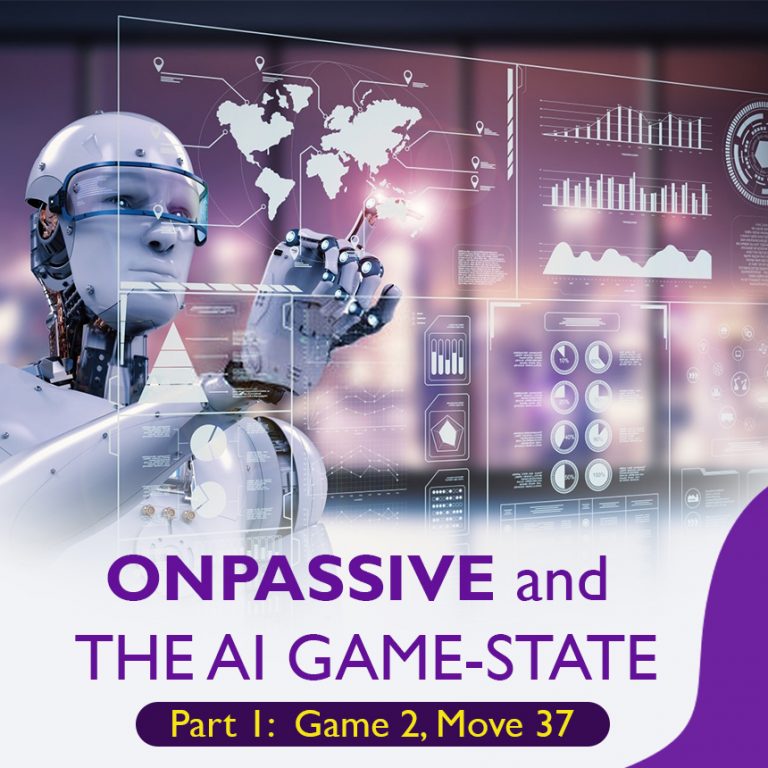
The intertwining theme throughout this document paints a broad picture of the revolutionary IT start-up about to launch publicly called ONPASSIVE that has already gained global popularity through pioneering its new-age business model.
In an attempt to broaden the understanding of ever-expanding uses for AI, and hence ONPASSIVE’s ever-expanding role and capabilities as a market maker and leader, this paper presents simple descriptions of an element of AI called Machine Learning currently in widespread use.
By pointing to what could be the beginning of the new industrial age and following up with current examples of AI technology from China’s recent plans and accomplishments, we can reasonably infer the path and direction ONPASSIVE is forging, as it becomes the globally dominant, AI-driven online marketing platform.
Used in ONPASSIVE, which develops its own value-line, and the AI that fuels them, we present AI here in a way that demonstrates its potential for exploding the strategic parameters of business, especially in the digital sectors.
Through this approach, we can conceptually review how ONPASSIVE’s radical model marks an evolutionary milestone and is able to operate with autonomy on behalf of its users; those above-average entrepreneurs that recognize value, get the vision, and accept an invitation to join the paradigm shift that is ONPASSIVE.
Part 1: Game 2, Move 37
During 2016, in Seoul, South Korea, events surrounding an ancient Chinese game, created about 4k years ago, change the course of history That was when the world champion of the Asian board game, “Go,” went head-to-head with an AI program developed by Google called “AlphaGo” in a series of competition known as the “Google DeepMind Challenge Match.”
The Asian game, Go, is the world’s most complex board game. As an illustration, imagine this: There are more possible moves in the game of Go than there are atoms in the universe. Legend has it that in 2300 BCE, Emperor Yao developed it to teach discipline, concentration, and balance to his son.
The event was the public unveiling of “Deep Learning,” a class of Machine Learning, which is a form of Artificial Intelligence (AI) that mimics the neural networks of the human brain. Simply put, AlphaGo was a computer program designed to learn through self-teaching as pertaining to specific tasks.
In this instance, it was given the rules of Go and a database of historical games having about 30 million moves made by expert players through the years. (This is the same type of AI that is heavily-used in ONPASSVE to run nearly everything on its platform.)
The challenge was seen as an unparalleled sports spectacle throughout Southeast Asia and was watched closely by tens of millions of people. As the games drew closer, it was the near-universal thought of all watching that an AI, AlphaGo in particular, would not be able to match the level of human creativity and intuition needed to win.
But AlphaGo’s performance turned into a game-changer that ushered in what could be thought of as the day that AI came of age and marked the beginning of the new industrial revolution.
The game-move reference in the title of this section refers to the 37th move the AI made in the second game of the series. Thought by all to have been a mistake, it turned out to be the singular move responsible for winning that game. Consequently, AlphaGo ended up winning 4 out of 5 games in this series of competition.
While the loss was a national upset, for some the experience became what we in the West call a “Eureka” moment. It was a moment recognized as a fundamental shift in the conceptualization of intelligence that signalled an inescapable realization of AI emerging as the dominant, technological frontier of the future, the one necessary for keeping pace with, and even domination, world change.
Little did anyone know, ONPASSIVE was already a “sparkle” in the eye of its visionary Founder, Mr Ash Mufareh, and plans for its AI-driven model were pinned across the drawing board of possibility.


